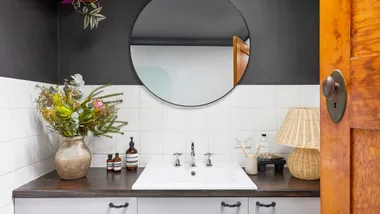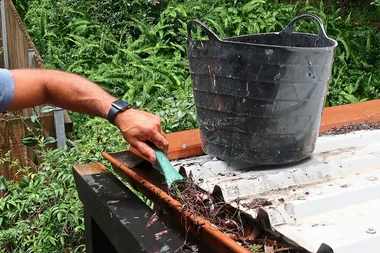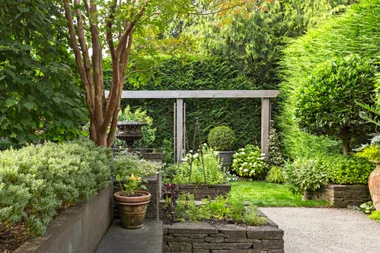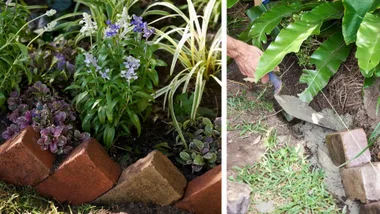Thought macramé disappeared with flares and lava lamps? Well, think again! Right now macramé is hot in homewares and decorating trends, and it’s easy to get the look without getting your stomach in knots over the price tag. Forget about fiddly little projects – we’re talking big and bold, tactile and beautiful.
Tying the knot
Using cotton rope or sash cord for your macramé allows the sculptural beauty of the knots to shine. Hang your creation on a contrasting background that will highlight the intricate beauty of the design – and don’t let on just how easy it is!
Gather your supplies
- 8m length Tasmanian oak dowel
- 240m coil of 7mm cotton sash cord
Here’s how

Step 1 Hang dowel on a wall or fence, just a bit higher than head height.
Step 2 Cut 28 lengths of sash cord, each 8m in length.
Step 3 Fold each length in half and loop it onto the dowel with a ‘lark’s head knot’ (see Diagram 1, above).
Step 4 Starting with the first 2 pairs on the left-hand side (4 strands) and working about 10cm below the lark’s head knot, take the left strand (coloured red in diagrams below) over the middle 2 strands and under the (blue) strand on the far right (see Diagram 2a, below). Now take the (blue) far right strand behind the 2 middle strands and out through the loop formed by the red strand (see Diagram 2b, below). Pull the right and left strands gently until the knot tightens. This is a half-square knot.

Step 5 To complete a full square knot, repeat the process from the right-hand side: take the far right strand over the middle 2 strands and under the far left strand (see Diagram 2c, below). Next, take the far left strand behind the 2 middle strands and out through the loop formed by the red strand (see Diagram 2d, below). Pull these 2 strands until they make a knot with the woven strands from the previous step. You now have a full square knot.
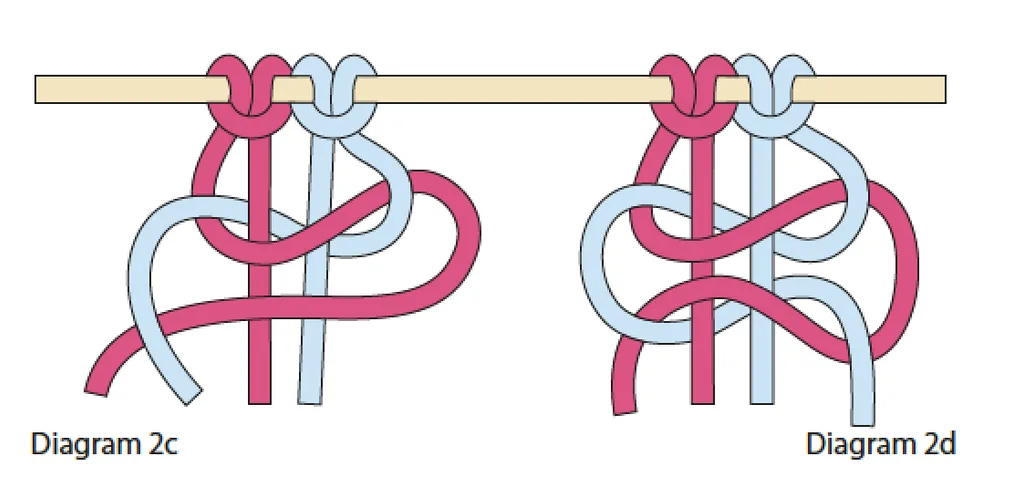
Step 6 Repeat Steps 4 and 5 to make a square knot on each of the fourteen 4-strand sets across the row of lengths, keeping them all the same distance below the lark’s head knots.
Step 7 For the next row, begin with the middle group of the fourteen 4-strand sets and create new groups of 4 strands by combining the 2 left-hand strands of the centre set with the 2 right-hand strands of the adjacent set, and the 2 right-hand strands of the centre set with the 2 left-hand strands of the adjacent set on the other side. Following Steps 4 and 5, make a square knot in each of these new sets of strands, positioning the knots about 5cm below the first row of knots (see Diagram 3, below).
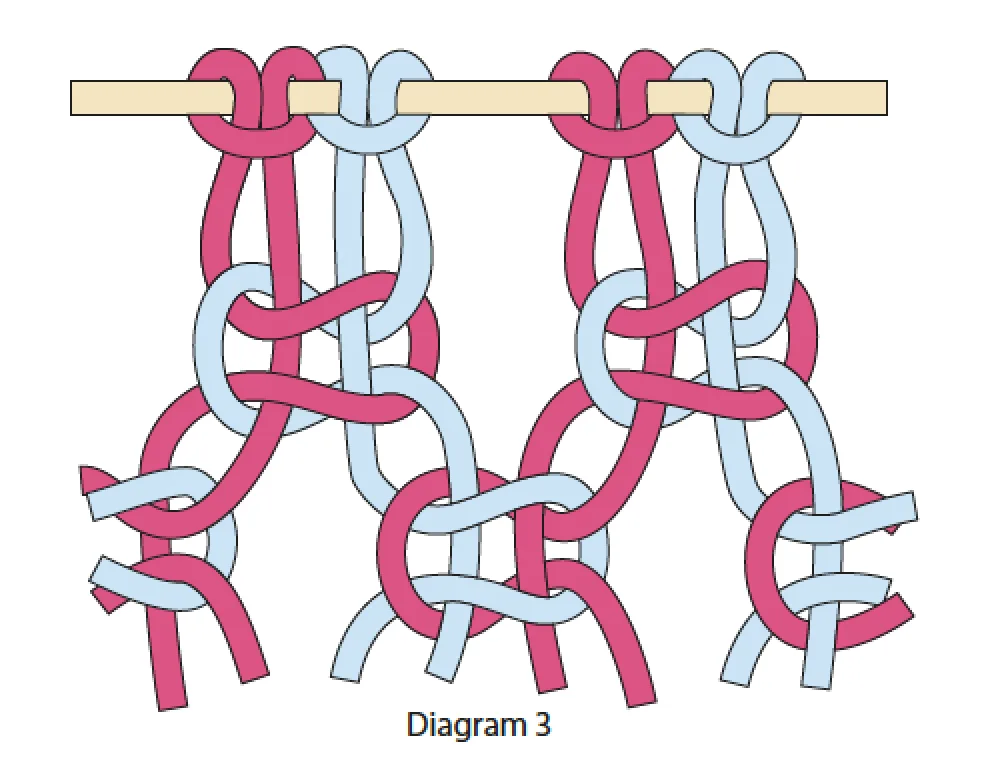
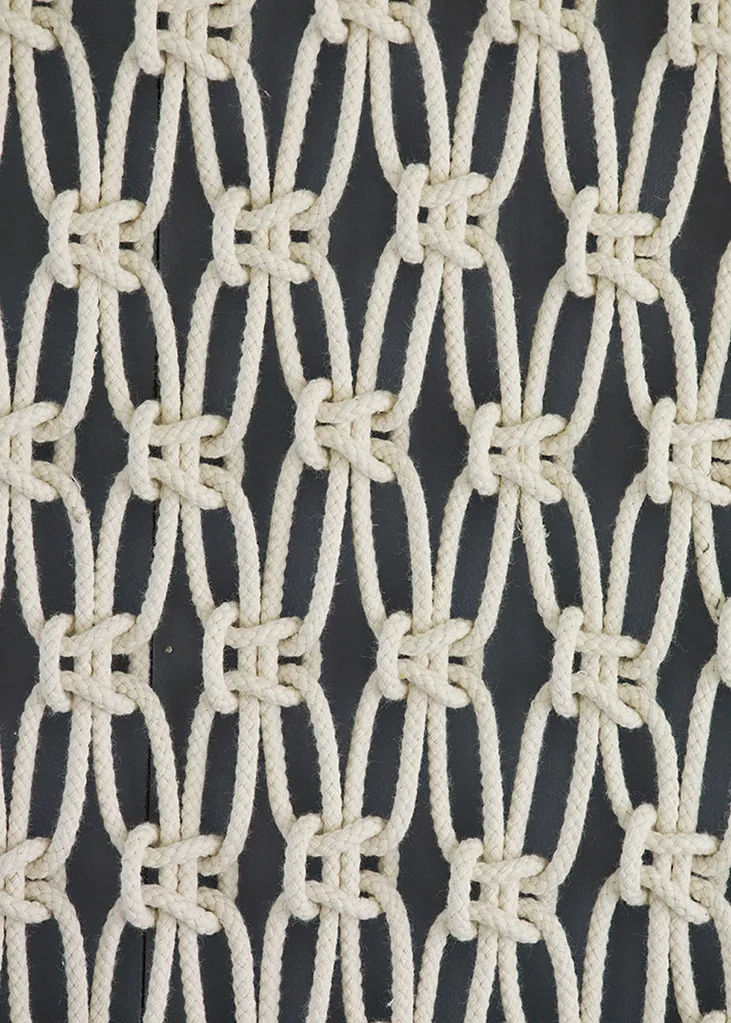
Step 8 Repeat this process across the row in both directions, recombining strands to create new 4-strand sets.
Tip If you’re having trouble working out which strand goes where, use binder clips or twist ties to hold the sets loosely together across the row.
Step 9 Keep working rows in this manner until your work is the length that you would like. Remember, each new row should combine alternate pairs of strands and, in every second row, the knots will be made in the same set of strands, so it’s easy to see if you’ve made a mistake. At the side edges, you can pull out the edge strand slightly, to create a decorative loop.
Step 10 When you get to the bottom, simply trim the strands to an even length – there’s no need to knot them off. Your wall hanging is now ready to hang!

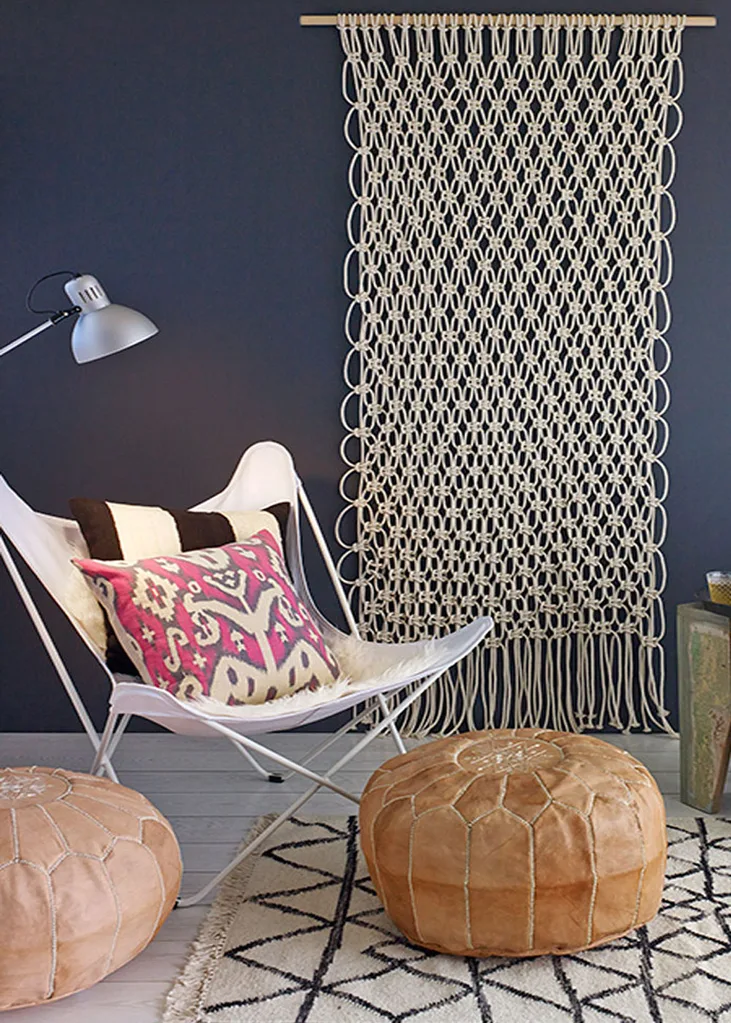
 Chris Jones
Chris Jones

